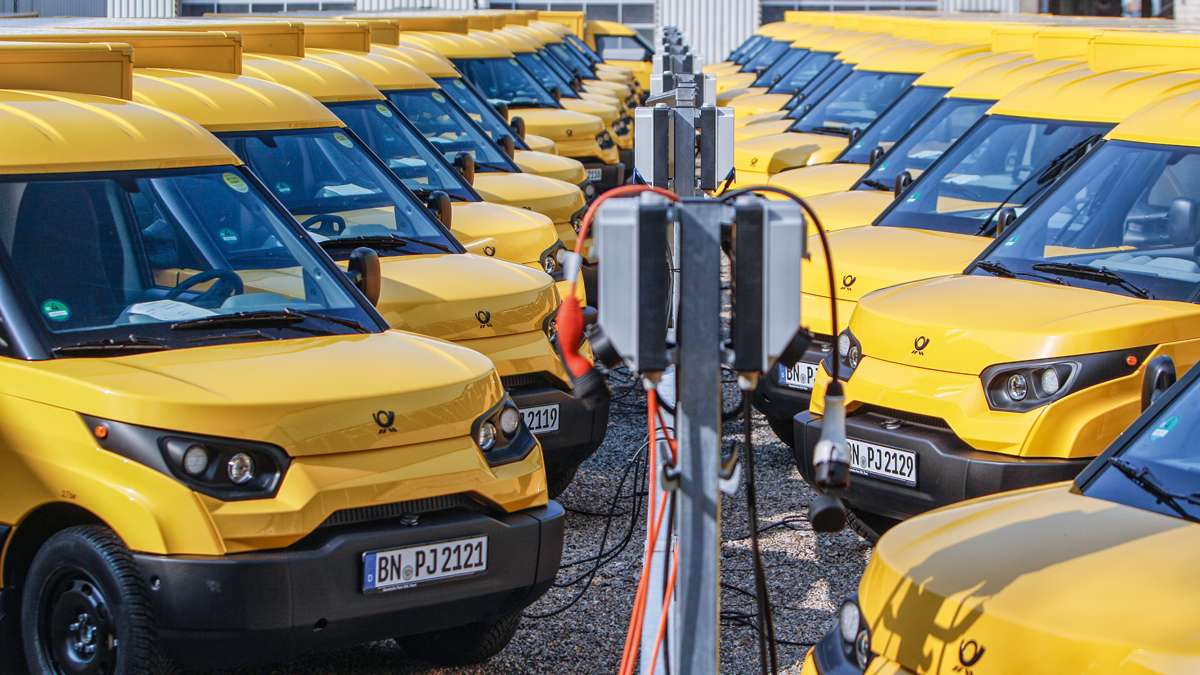Always Live – Thanks to IoT Platform and AI
In a research project involving more than 60 Work XL street scooters from Deutsche Post DHL, IAV is examining the flexibility potential of electric fleets and the possibilities of intelligent network integration.

Optimal grid load thanks to AI
An important prerequisite is therefore that the demand for electricity is intelligently linked to the generation of electricity from renewable energies. “The big challenge is to integrate the logistical criteria of the fleet operator and the requirements of the grid operator into the control of the charging processes. These are two completely different worlds that we are linking together for the first time,” says Robert Frase, Head of Department of the Thermodynamics and Power Systems division at IAV. In the Netz_eLOG project, IAV is developing an interoperable IoT platform that compares and evaluates the data fed in by the network and fleet operators. An AI-based load control system based on this platform ensures an optimum grid load and ensures that the fleet is charged in line with demand. The aim is that grid operators will be able to use this software solution to predict future demand and take it into account in grid planning. This is possible both during “normal” operation and at peak times, such as during the Christmas period, when vehicles travel longer routes and also need to be charged in between.
“For this project, our experience in automotive development is playing into our hands,” adds Robert Frase. “In addition to its expertise in the development of electric vehicles and their technical features, IAV covers the range from communication from the vehicle to the charging station, an underlying back-end and the effects on the power grid.”
The development and use of data platforms is also a key element within this context. Robert Frase: “We think in systems – whether in vehicle development or in the energy industry.
«We rely on synergies: We want to use our experience in automotive development for the topics of 'digitalization' and 'automation.'»
— Head of Department of the Thermodynamics and Power Systems division at IAV
For IAV, there are many parallels between the two areas: There is hardly any difference between control engineering and data record management in vehicles and energy industry plants.
Projects and partner
- „Netz_eLOG“ (“Intelligent grid integration of electrified logistics”)
- Reiner Lemoine Institut gGmbH (consortium leader), IAV GmbH, E.DIS Netz GmbH, DHL Kleinmachnow (associated partner).
- Netz_eLOG is funded within the framework of the “Erneuerbar mobil” funding program of the German Federal Ministry for the Environment, Nature Conservation and Nuclear Safety (BMU). The project management agency is VDI/VDE-IT.
The article was published in automotion 03/2020, the automotive engineering magazine of IAV. Here you can order the automotion free of charge.


